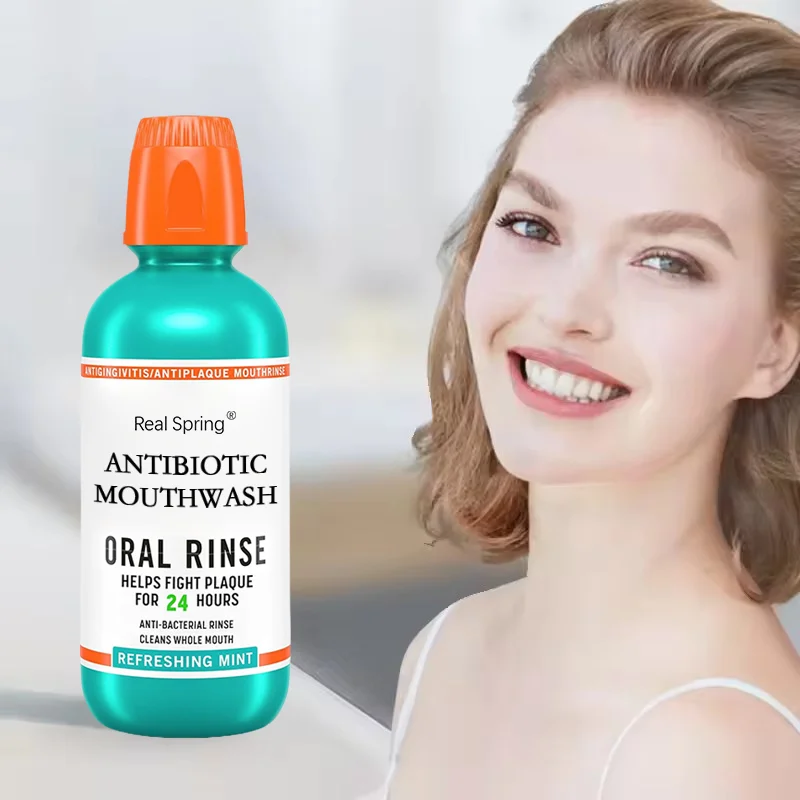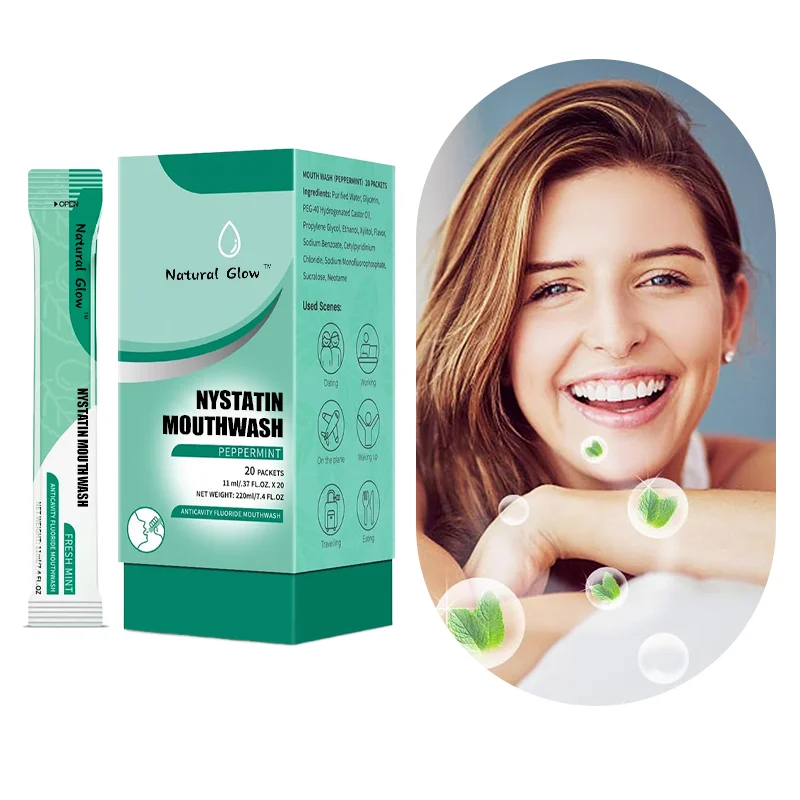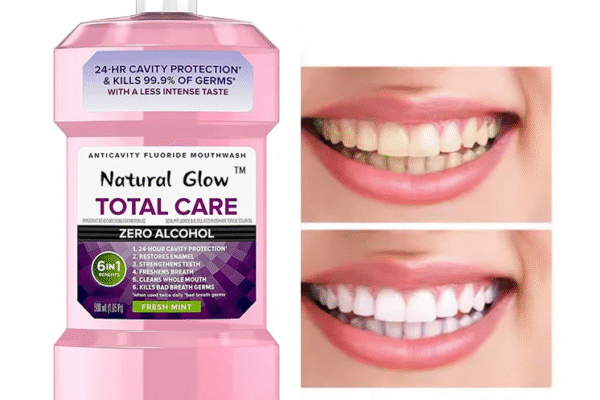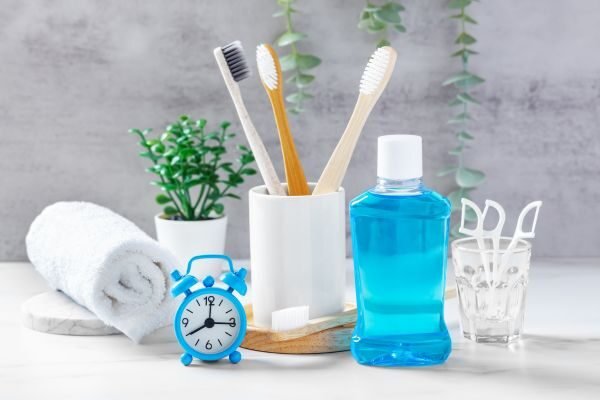We’ve all been there: leaning in for a conversation, only to catch a whiff of our own breath and panic. Bad breath isn’t just embarrassing—it can knock your confidence and even strain relationships. But here’s the frustrating truth: most mouthwashes on the shelf are little more than temporary fixes. They mask odors for an hour or two, then disappear, leaving the root cause untouched. That’s why finding the best mouthwash for bad breath requires more than grabbing the first minty bottle you see.
Als Profi Hersteller für Mundpflege, we work with dentists and researchers to understand what truly banishes bad breath—not just covers it up. Experts agree: effective bad breath solutions target bacteria, balance your mouth’s natural environment, and use ingredients that work with your body, not against it. In this guide, we’ll break down what the experts really look for in the best mouthwash for bad breath, from must-have ingredients to red flags to avoid.
I. Why Most Mouthwashes Fail at Fixing Bad Breath
Let’s start with the hard truth: many of store-bought mouthwashes aren’t designed to solve bad breath—they’re designed to sell. Their secret? Strong flavors and alcohol that create an instant “fresh” feeling, even though they’re making the problem worse long-term. A professional supplier knows better than to rely on these tricks.
1. Alcohol—Bacteria Killer
Alcohol is the biggest culprit. It kills bacteria, sure, but it also dries out your mouth. Saliva is your mouth’s natural defense against odor-causing bacteria, so drying it up means bacteria can multiply faster once the alcohol wears off. That’s why the best mouthwash for bad breath is always alcohol-free. Experts compare alcohol-based mouthwashes to putting a band-aid on a wound—it looks better temporarily, but doesn’t help it heal.
2. What Causes Bad Breath
Another issue? One-size-fits-all formulas. Bad breath can come from different sources: leftover food particles, dry mouth, or even imbalanced oral pH. Generic mouthwashes treat all these causes the same way, which is why they rarely work for everyone. A skilled manufacturer addresses this by offering custom formula design, tailoring ingredients to target specific odor sources. For example, a formula for morning breath caused by overnight bacteria buildup, needs different ingredients than one for post-meal freshness.

II. Expert-Approved Ingredients in the Best Mouthwash for Bad Breath
Dentists and oral care specialists agree: the best mouthwash for bad breath relies on science-backed ingredients that tackle odor at its source. These aren’t fancy buzzwords—they’re components that have been proven to kill bacteria, neutralize odors, and support a healthy mouth environment.
1.PEG-40 Hydrogenated Castor Oil: The Odor Neutralizers
PEG-40 hydrogenated castor oil is a valuable auxiliary ingredient in bad breath-fighting oral care products—not a direct “odor neutralizer” itself. Unlike ingredients like zinc compounds that target and neutralize sulfur compounds, PEG-40 hydrogenated castor oil acts as a surfactant and solubilizer: it helps dissolve, disperse, and stabilize other active anti-odor or antibacterial ingredients in mouthwash, ensuring these key components work evenly and effectively.
It does not have direct disinfectant properties to “remove oral odor” on its own; instead, it boosts the performance of the functional ingredients it pairs with, creating a more balanced, stable oral care formula. As a supplier, we prioritize PEG-40 hydrogenated castor oil in specific bad breath-focused formulas for this supportive role. For example, Nystatin-Mundwasser uses PEG-40 hydrogenated castor oil to help solubilize nystatin and enhance its stability, ensuring the ingredient works reliably. Similarly, in antibiotische Mundspülung, PEG-40 hydrogenated castor oil aids in dispersing the antibiotic evenly, preventing ingredient clumping and improving the formula’s usability.

2. Natural Extracts for Gentle, Effective Cleaning
Experts love natural extracts not just for their fresh scents, but for their antibacterial properties. Ingredients like tea tree oil, peppermint oil, and even camellia extract fight bacteria without harsh side effects. Peppermint oil, for example, leaves a refreshing taste while killing odor-causing germs, and lemon peel oil has a strong inhibitory effect that can kill bacteria and viruses in the mouth, while our mouthwash is gentler and less irritating to the oral mucosa. Luckily, we have antiseptisches Mundwasser that has many natural and raw materials. These natural ingredients appeal to modern consumers who want effective products without synthetic chemicals—a win-win for brands using private label services to target health-conscious buyers.
3. pH-Balancing Agents for a Healthy Mouth Environment
Your mouth’s pH level is a hidden player in bad breath. When it’s too acidic, odor-causing germs thrive. The best mouthwash for bad breath includes pH-balancing ingredients like sodium bicarbonate to neutralize acid and create an environment where good bacteria can flourish. This isn’t just about fresh breath—it’s about long-term oral health. A balanced pH helps prevent cavities and gum issues, which can also cause bad breath down the line. So, we recommand our alkalisches Mundwasser, which has a higher pH value and can neutralize acidic substances in the mouth.

III. Beyond Ingredients: What Makes a Mouthwash Truly Effective?
Great ingredients are essential, but the best mouthwash for bad breath needs more to stand out. Experts pay attention to details like packaging, usage instructions, and even sustainability—factors that might seem small but make a big difference in how well the product works.
1. Package Matters
Packaging matters more than you’d think. Ingredients like zinc and natural oils can break down when exposed to light or air, which is why professional manufacturers use opaque, airtight bottles. Sustainable packaging options like recyclable materials, are also a plus, as eco-conscious consumers are more likely to stick with brands that align with their values. A supplier that offers both effective formulas and green packaging checks two big boxes for modern buyers.
2. Usage Frequency
Usage frequency is another key factor. The best mouthwash for bad breath isn’t a once-a-day solution—it’s part of a routine. Experts recommend swishing after brushing and flossing, and even carrying a travel size for post-meal freshness. This is where OEM/ODM services shine: brands can create both full-size bottles for home use and mini versions for on-the-go, making it easier for customers to stay consistent.
Abschluss
Finding the ultimate best mouthwash for bad breath doesn’t have to be a guessing game. By focusing on alcohol-free formulas with zinc, natural extracts, and pH-balancing ingredients, you can skip the temporary fixes and choose a product that targets odor at its source. Experts agree: the most effective mouthwashes are those that combine science-backed ingredients with thoughtful design, whether that’s through custom formulas, sustainable packaging, or convenient usage options.
Remember, the best mouthwash for bad breath isn’t just about fresh breath—it’s about supporting a healthy, happy mouth. With the right ingredients and a trusted supplier, that’s entirely achievable.







